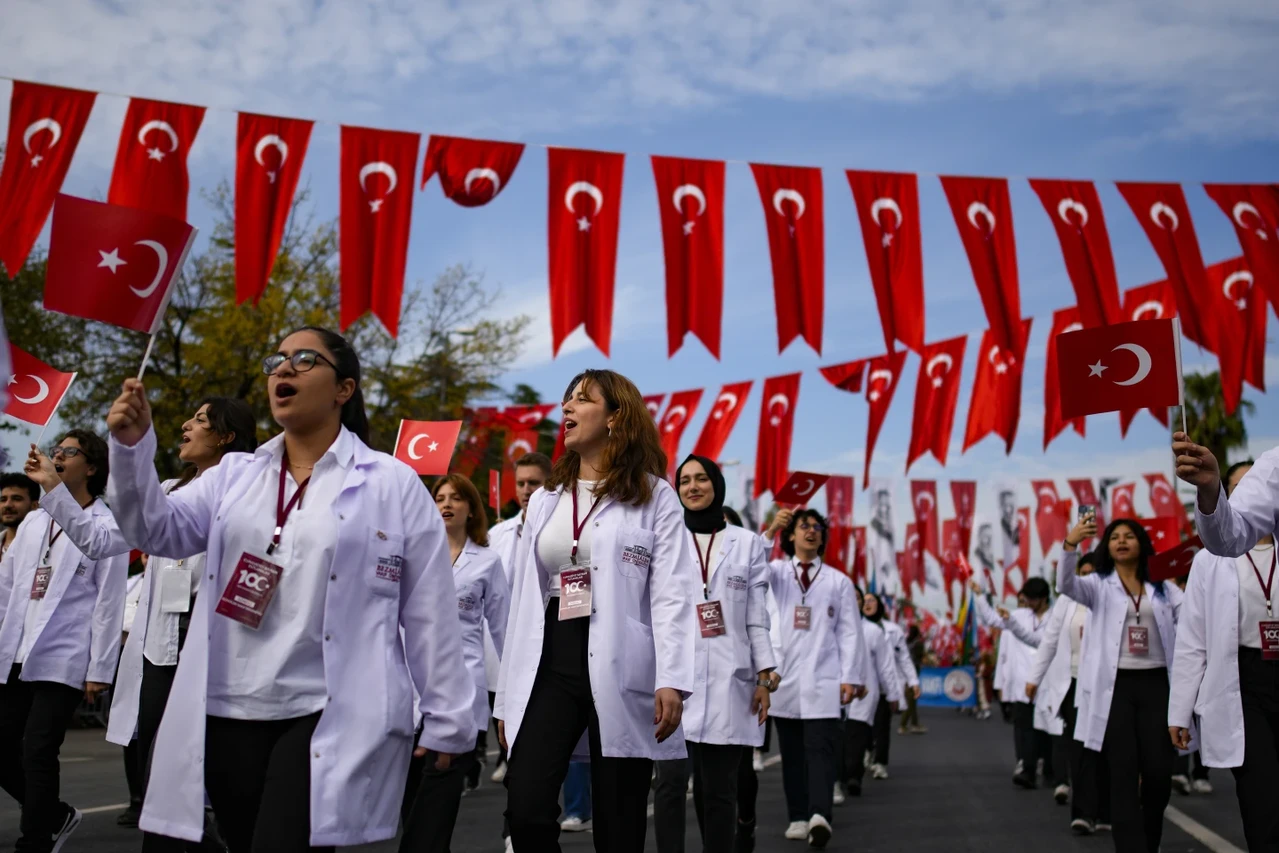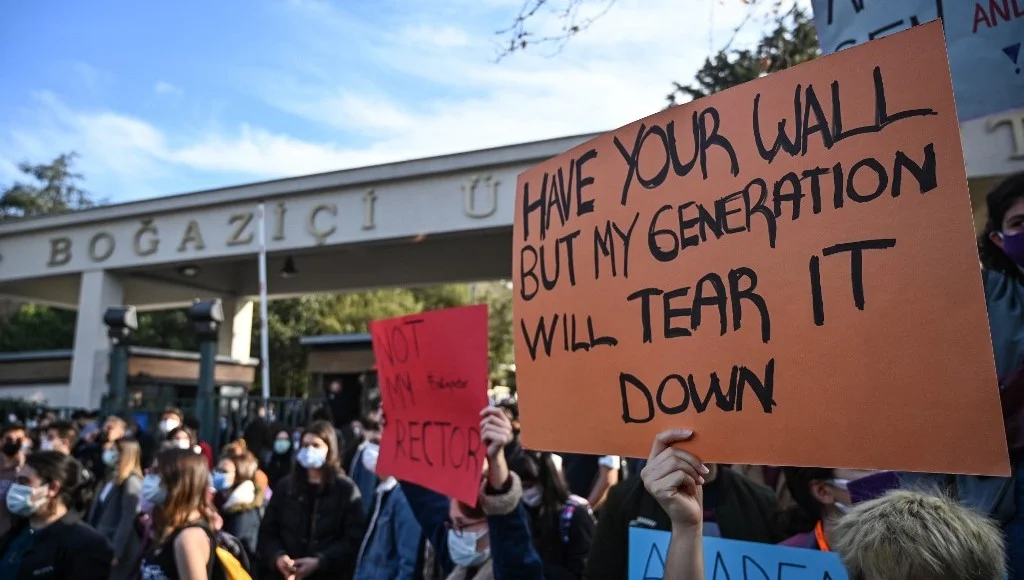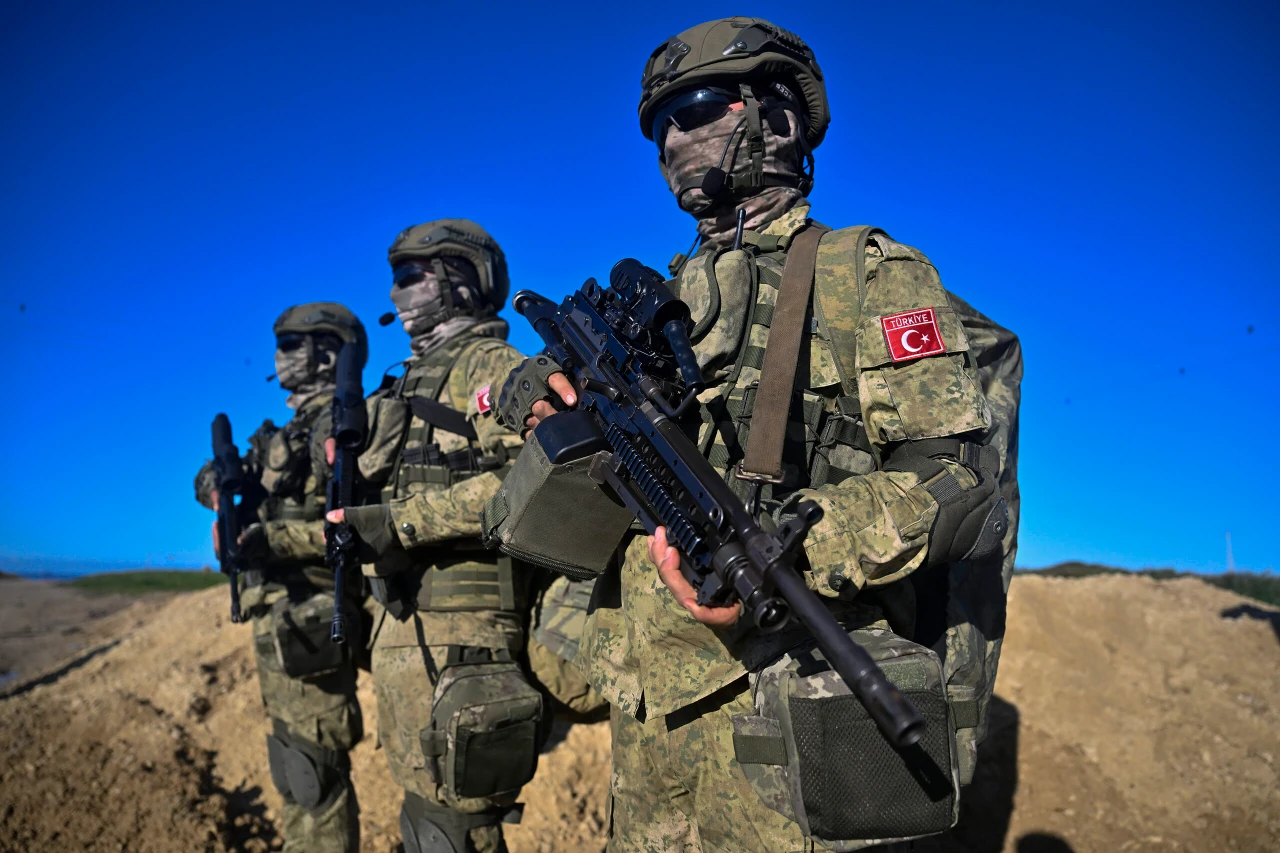Rising dropout rates in secondary, higher education in Türkiye raise concerns
 Medicine university students take part in a parade during celebrations marking the 100th anniversary of the creation of the modern secular Turkish Republic, in Istanbul, Türkiye, Oct. 29, 2023 (AP Photo)
Medicine university students take part in a parade during celebrations marking the 100th anniversary of the creation of the modern secular Turkish Republic, in Istanbul, Türkiye, Oct. 29, 2023 (AP Photo)
The number of students leaving secondary and university education in Türkiye is increasing each year. While 15-17-year-old girls had an 11.5% workforce participation rate in 2023, the rate for boys in the same age group was significantly higher at 32.2%.
Given that girls aged 14-17 are almost equally likely to be out of school compared to boys but participate in the workforce at lower rates, the question arises: where are these young girls, and why are they dropping out of education?
Alarming statistics show spike in school dropouts
Recent data reveals that 3.9% of school-age children in Türkiye, equating to approximately 612,814 children, are not enrolled in school – a 38.4% increase from the previous academic year.
Including Syrian and foreign children under temporary protection, the number reaches 855,174, with 53.6% being boys and 46.4% girls. Of these, the largest segment (73.9%) falls within the 14-17 age range, a critical phase for educational development.

ERG report sheds light on educational disparities
The Education Reform Initiative (ERG) released its “Education Monitoring Report 2024,” highlighting the multi-layered crises Türkiye’s education system faces. According to ERG’s Education Observatory Coordinator, Burcu Meltem Arik, “The impact of the economic crisis on education is deepening, amplifying inequalities in educational access for disadvantaged groups.”
Key findings from report
- Regional disparities: Provinces with the highest rates of 15-17-year-olds out of school include Mus (35.6%), Agri (32.4%), and Gumushane (28.7%). This issue is especially pronounced in eastern and southeastern Anatolia.
- Risks for young girls: Girls out of school are at heightened risk of early and forced marriage. In Mus, one in three girls aged 16 and 17 are out of school, a similar situation is seen in Siirt, Bitlis and Agri.
- School attendance isn’t enough: Enrolling in school does not ensure access to quality education. Education quality must be monitored through factors beyond enrollment rates, including attendance, grade repetition, and dropouts.
Pre-primary education enrollment declines after new fee policy
A policy change in October 2023 allowed official preschool institutions to charge fees for essential needs, self-care support, and implementing the educational program.
Following this shift, preschool enrollment dropped from 2,055,350 to 1,954,202 students in the 2023-24 academic year.
Worrying deficit in basic skills and higher education placement
Analyzing the Higher Education Institutions Exam (YKS) results from the past two years, only one in three students applying at the final grade level secured placement in higher education.
The placement rate for 2022 was 30.1%, rising to 32.3% in 2023. Notably, 67.3% of students from social sciences high schools gained placement, whereas vocational and technical schools had the lowest rate at 21.3%, indicating that only one in five students from these programs advanced to higher education.
One in 3 youths in Türkiye, neither in education nor employed
Türkiye’s NEET (Not in Education, Employment, or Training) rate is nearly one of three youths, compared to the EU average of one in five.
This concerning statistic reflects a rising disenchantment with education, increased educational costs, and diminishing returns on investment in education.
Families shoulder heavy financial burden in education spending
Even though public funds cover a significant portion of educational expenses, families contribute around 15% of these costs. A substantial gap exists in education spending between households, underscoring inequities in access to educational resources across socioeconomic lines.
The findings reveal a pressing need for comprehensive educational reform and targeted support to bridge these divides and reengage Türkiye’s youth in meaningful educational paths.



